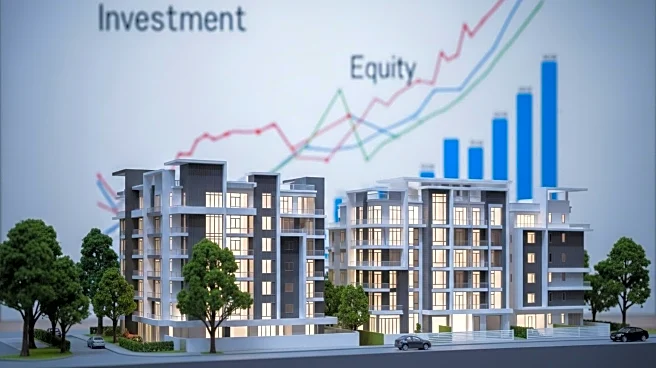What's Happening?
The Federal Reserve Bank of Atlanta has released data indicating significant challenges in home ownership affordability across many U.S. metropolitan areas. According to the Home Ownership Affordability Monitor (HOAM) index, the median home price in August reached $413,000, marking a 28% increase from $321,000 in August 2020. This index measures the affordability for median-income households aiming to purchase a median-priced home, comparing actual median household income to the 'qualified' income needed to keep annual housing costs at or below 30%. An index score of 100 or higher suggests that the median household income is sufficient to afford a median-priced home, while a score below 100 indicates insufficient income. The data, updated monthly, reveals that most metropolitan areas, particularly in the West and Midwest, have become increasingly expensive, making it difficult for median-income households to afford homes.
Why It's Important?
The rising cost of home ownership in the U.S. has significant implications for economic stability and social equity. As housing prices continue to outpace income growth, many families face increased financial strain, potentially leading to reduced consumer spending and economic growth. This trend may exacerbate wealth inequality, as home ownership is a key component of wealth accumulation for many Americans. The affordability crisis could also impact demographic shifts, with families potentially relocating to more affordable regions, affecting local economies and community structures. Policymakers and stakeholders in the housing market may need to address these challenges to ensure sustainable economic development and social cohesion.
What's Next?
As the affordability index continues to be updated, stakeholders including policymakers, real estate developers, and financial institutions may need to consider strategies to address the growing affordability gap. Potential measures could include increasing the supply of affordable housing, revising zoning laws, or providing financial assistance to first-time homebuyers. The ongoing monitoring of the HOAM index will be crucial in guiding these efforts and assessing their impact on housing affordability across different regions.
Beyond the Headlines
The affordability crisis in housing may also have long-term cultural and societal implications. As home ownership becomes less attainable, there could be shifts in the traditional American dream, with more individuals opting for renting or alternative living arrangements. This could lead to changes in community dynamics and influence future urban planning and development strategies. Additionally, the disparity in housing affordability may prompt discussions on social justice and the need for equitable access to housing.










